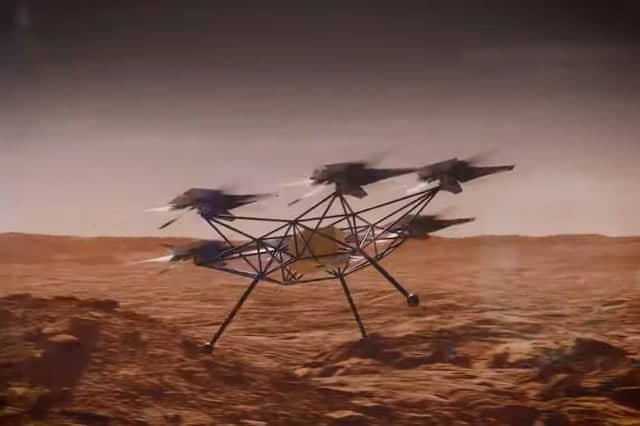NASA has recently introduced the Mars Chopper, a new drone designed to succeed the Ingenuity helicopter. Ingenuity operated on Mars for nearly three years, far exceeding its initial mission parameters. The Mars Chopper represents advancement in aerial exploration capabilities on the Red Planet.
Design Features
The Mars Chopper is approximately the size of an SUV. It features six rotors, each with six blades, which are smaller than those of Ingenuity. This innovative design is expected to provide enhanced lift and stability during flight. The bulkier structure allows for a greater payload capacity, enabling it to carry up to five kilograms of scientific instruments.
Enhanced Exploration Capabilities
The new drone can fly distances of up to three kilometres. This capability allows scientists to conduct detailed studies of large terrains quickly. The Mars Chopper can access areas that rovers cannot safely navigate, making it an invaluable tool for Martian exploration.
Ingenuity’s Legacy
Ingenuity, which weighed only 1.8 kilograms, was originally designed for five experimental flights over 30 days. However, it completed 72 flights and travelled 30 times farther than anticipated. This remarkable achievement demonstrated the potential for aerial vehicles on Mars, paving the way for the Mars Chopper.
Challenges of Martian Flight
Flying on Mars presents unique challenges due to its thin atmosphere, which has less than 1% of Earth’s density. This requires helicopters like Ingenuity and the Mars Chopper to exert more effort to achieve lift. Additionally, the fine Martian dust poses risks to the delicate equipment on these aerial vehicles.
Technological Advancements
The Mars Chopper incorporates several technological improvements. Its increased payload capacity allows for the installation of advanced imaging and analysis kits. These enhancements enable the drone to perform more complex tasks and gather critical data about Mars’ surface and atmosphere.
- The Jezero Crater is landing site for Mars missions.
- NASA’s Jet Propulsion Laboratory (JPL) is renowned for its space exploration innovations.
- The Mars Chopper’s design was a collaboration with the Ames Research Center.
- Ingenuity’s navigation failure was caused by challenging terrain conditions.
- The thin Martian atmosphere complicates flight operations .
Future Implications for Mars Exploration
The Mars Chopper is expected to play important role in future missions to Mars. Its ability to collect and transmit important information will support both robotic and human exploration efforts. By providing aerial views of previously inaccessible areas, the Mars Chopper will enhance our understanding of the Martian environment and its potential for future human habitation.

Leave a Reply